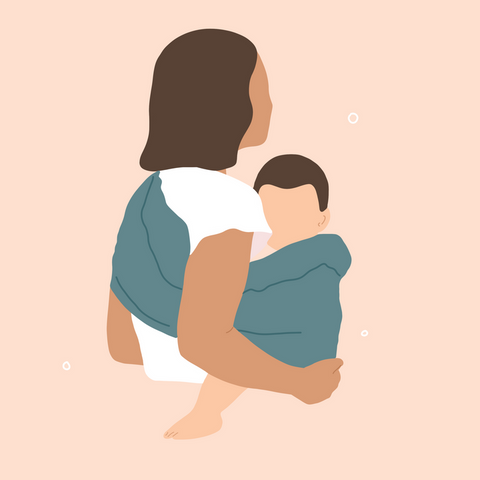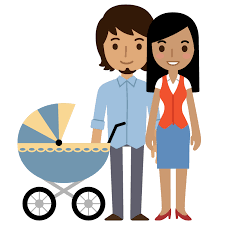Diabetes symptoms in children

As Amazon affiliates, we may get a small commission if your purchase from any of the links in this post.
Introduction
Diabetes or diabetes mellitus refers to a set of diseases that are potentially quite dangerous. These diseases can affect people in all age groups. If you or your loved one is afflicted, you will require proper management of the illness to ensure good health and the best possible quality of life. As a parent, you are concerned about your children's welfare as you seek to minimize the stresses associated with parenting [10]. It is particularly worrisome when your child is sick. You worry about what causes the illness, how long it will last, and how to ensure they stay healthy afterwards. It is no different for the parents of children with diabetes. They need to know diabetes symptoms in children and how to keep diabetic children in the best health. We will explore what diabetes is, the symptoms of diabetes, and how to manage this illness in children.
What is insulin? [1]
To understand diabetes, we need to understand what insulin is and what it does. Insulin is a hormone made in the pancreas that plays a vital role in regulating blood sugar levels. It controls the body's metabolism and storage of sugar and fat. Many of the body's cells require insulin to obtain glucose from the blood.
How does the body use insulin? [2]
The body produces insulin in response to changes in blood sugar levels. Other hormones and proteins released in the gut also stimulate insulin release. Insulin then signals cells in the liver, muscle, and fat tissue to take in glucose, controlling blood glucose levels. The cells that have insulin then use this glucose as fuel.
What does insulin do?
Insulin and glucagon (another hormone produced by the pancreas) work together to regulate blood sugar levels. Insulin lowers blood sugar levels by increasing glucose absorption and metabolism in cells. Glucagon raises them if they are too low. Therefore, insulin and glucagon maintain blood glucose within a specific range, allowing the body to function normally.

What is diabetes mellitus?
Diabetes mellitus includes two diseases: type 1 and type 2 diabetes.
Type 1 Diabetes
With type 1 diabetes, the body does not produce enough, if any, insulin. Insufficient insulin prevents glucose from entering the cells, causing blood sugar levels to rise. These high blood sugar levels can lead to health complications that require immediate attention. Others take years to manifest.
Type 1 versus Type 2 Diabetes
Type 1 diabetes used to be the more prevalent form of the disease in children. It was also known as juvenile or insulin-dependent diabetes. However, type 2 diabetes in children and adolescents is on the rise. If parents understand the symptoms and how to cope with the illness, they can manage the parental stresses.
Type 1 diabetes in children symptoms [3]
Where children develop diabetes, the symptoms may seem to appear suddenly, causing parents great concern. So what are the signs of juvenile diabetes? [4]
Increased thirst
As blood glucose levels increase, the body attempts to remove it in body fluids. The body requires more liquids to flush the sugars, resulting in increased thirst.
Frequent Urination
The child will need to urinate very often, especially at night. A child who was consistently getting out of bed to go to the bathroom may begin wetting the bed. This is because their need to urinate increases with their body's attempts to excrete glucose. Parents need to pay attention to such changes in their children.
Intense hunger
The child will seem to be continuously hungry, as their body struggles to utilize glucose which cannot be converted to energy. The organs need this energy to function correctly. This, in turn, causes the toddler to be extremely hungry as the body's cells and muscles constantly seek new energy sources and nutrients.
Tiredness
Since the child's body cannot process carbohydrates for energy, the child may become listless or show signs of fatigue.
Rapid Weight Loss
Weight loss and slowed growth are common symptoms of type 1 diabetes in newborns and toddlers. Despite the child's constant hunger, the body cannot convert glucose into energy, resulting in rapid weight loss.
Impaired Vision
If your child has blurry vision, this could also indicate diabetes. So keep an eye out (pun intended) for the other warning signs. All of the vital fluids in the body's tissues are affected when the body tries to expel the excess glucose. Since eyes have a high water content, they are also affected, resulting in blurred vision.
Frequent yeast infections [7]
It may be challenging to identify this. Signs of yeast infection in toddlers and young children include:
- diaper rashes that are difficult to treat properly and take a long time to heal; or
- thrush in the mouth even after the first birthday
This symptom is especially widespread in female children. These can be signalling diabetes.
Fruity smelling breath
Many ask, "Is bad breath a symptom of diabetes?"[5] The 'bad' breath caused by diabetes is an unusual odour, often described as sweet or fruity. Many believe the scent is similar to the smell of acetone. Several factors contribute to this breath odour [6] in diabetic children, including periodontal disease, ketones, dry mouth, and diabetes-related infection.
Irritability
Parents should be concerned when a child suddenly becomes agitated, restless, or moody, especially where there are other symptoms of diabetes presenting.
Type 2 diabetes symptoms in children [8]
Type 2 diabetes, previously called Adult-onset diabetes, since adults were more prone to developing it. Insufficient insulin is produced, or the insulin produced does not work properly. Insulin resistance occurs.
Who is affected
Type 2 diabetes mainly affects adults over 40. However, obesity is fueling the growth of type 2 diabetes in children as young as seven years old. Type 2 diabetes symptoms in children can include all the symptoms described for Type 1 diabetes plus those described below:
Weight Gain
Most children and adolescents diagnosed with type 2 diabetes are overweight.
Sores that heal slowly
Type 2 diabetic children may have sores or infections that are difficult or take a long time to heal.
Skin discolouration
When a child has developed type 2 diabetes, you may notice darker patches of skin in the armpits and neck caused by insulin resistance. Acanthosis nigricans is the medical term for this ailment.
Type 1 diabetes child life expectancy [9]
People with type 1 diabetes develop diabetes at a younger age than those with type 2 diabetes. Hence type 1 diabetics live with the disease for a more extended amount of time. As a result, patients with type 1 diabetes generally live an estimated 20 years shorter lives than people without the illness.
The good news
Persons with type 1 diabetes are living longer thanks to recent breakthroughs in diabetes care. Since 1965, children with type 1 diabetes have lived an average of 69 years. On average, non-diabetic children born in the same period live over 72 years. People with type 1 diabetes have been known to live up to 85 years.
How do you know if your child has diabetes? [11]
Testing includes:
Random blood sugar test
This is the primary diabetes screening test. A random blood sample is collected. A blood sugar level of 200 mg/dL or 11.1 mmol/L or greater indicates diabetes.
A1C test
This test shows your child's three-month average blood sugar level. An A1C score of 6.5% or greater on two independent tests indicates the disease.
Glucose fasting test
Your child's blood is tested following overnight fasting. A fasting blood sugar of 126 mg/dL or above indicates diabetes.
Extra tests
If blood sugar levels indicate diabetes, your doctor will request tests to distinguish type 1 or type 2 diabetes.
Including tests for:
- Antibodies found in type 1 diabetes
- Ketones in the urine or blood that signify type 1 diabetes.
How to manage diabetes in children
Managing diabetes in your child is a collaborative effort between your child's doctor, diabetes educator, dietician, and you. All of you work together to keep your child's blood sugar levels as normal as possible.
Diabetes treatment involves:
- Eating well [12]
- Regular exercise
- Frequent blood sugar checks
- Counting carbs
- Insulin use
Conclusion
We have explored diabetes symptoms in children [13] and acknowledge that diabetes is a serious condition that can lead to other illnesses if left unmanaged. However, there is hope even if you see signs of diabetes in 2 year old or even in babies. Signs of diabetes in toddlers UK is not a sentence of a miserable life. Advancements in medicine allow for proper monitoring of blood sugar levels and administering treatments like insulin using pens and pumps. Information is also widely available on managing diabetes through diet, exercise, and weight management.
We can help promote healthy, active lifestyles for healthy, active children.
Related Articles
Getting through new born sleep patterns
What you should know about the child vaccine schedule
What exactly is attachment parenting?
To breastfeed or not?
Is it time for a new way of potty training?
White noise players- 3 mistakes parents make
Links
[2] Insulin | You and Your Hormones from the Society for Endocrinology
[3] Type 1 diabetes in children - Symptoms and causes - Mayo Clinic
[4] Kids' Health & Pediatrics : Symptoms of Type 1
[5] Diabetes and Bad Breath (ezinearticles.com)
[6] Bad Breath and Diabetes: Causes and How to Manage Bad Breath (byramhealthcare.com)
[7] Yeast Infections and Diabetes | DrGreene.com
[8] Type 2 Diabetes in Children: Symptoms, Causes, and More (healthline.com)
[10] (1) Parenting- The stress free way – Yum Yum Mama (yumyum-mama.com)
[11] Type 1 diabetes in children - Diagnosis and treatment - Mayo Clinic
[13] Symptoms of Childhood Diabetes - Bing video












